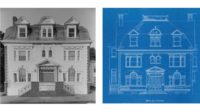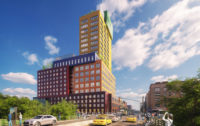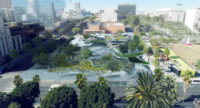Jake Bittle Documents Climate Displacement Across the United States in New Book
Review: ‘The Great Displacement: Climate Change and the Next American Migration' by Jake Bittle

If scientists have developed complex climate models that are often reduced to mere degree measurements for public consumption, then architects and designers routinely condense climate—adaptation proposals to sea walls and parks. Journalist Jake Bittle has written a rejoinder of sorts to these future-scenarios of living with climate change by exploring contemporary climate displacement in the United States.
The book’s argument is straightforward: climate displacement is already occurring, and its story “is messy, diffuse, and many-stranded. There is no single starting point, no shot-heard-round-the-world moment that kicked off this evolving process of relocation.” From soil erosion to droughts, and from flooding to wildfires, Bittle investigates the impact of climate displacement over eight compelling chapters. The result of hundreds of interviews and visits to each of the locations spread out across the U.S., the book is born from extensive fieldwork. In the hands of an unskilled narrator, this could easily create a sense of whiplash for a reader who encounters wildfires in California in one chapter and dire droughts in Arizona in another. Instead, the author reveals intricate connections among the people and places he visits.
Eschewing charts and maps, Bittle focuses on the lives of individuals and whole communities forced to migrate. Thick description can conjure images of worlds and experiences that might otherwise be flattened by black-and-white diagrams. For instance, in chapter four, we are introduced to the Verdins of Bayou Pointe-au-Chien, Louisiana. Here, a family with deep ties to this area in the Mississippi Delta has for generations been forced to confront soil erosion and flooding. Bittle’s approach allows him to not only give readers a sense of what it has been like for the Verdins (and families like them), but also detail the ways in which the conditions they’re facing are different from what people in the Florida Keys or the coast of North Carolina are confronting. Bittle’s ability to zoom in and out, combined with clear and striking prose, goads the reader into seeing climate displacement from a vantage point other than the frame of a single news cycle of disaster. Instead, we are shown how problems accrue over time, often slowly, but with clear warning signs.
In “Where Will We Go,” the eighth and final chapter, the author builds on the rich descriptions of climate displacement to speculate on what might come next. And, while the “largest migratory trends in the United States have little to do with climate change,” Bittle cites ample evidence to suggest that they will. Having shown how widespread the risks of climate change are in so many locales, it’s obvious that no place will go unscathed.
But some areas may prove safer and more welcoming than others, particularly in the Rust Belt. As Bittle points out, shrinking cities like Buffalo, New York, have attempted to turn their geography into a boon, with campaigns claiming that their community is a “climate-refuge city.” City campaigns aside, the author concludes with the question of responsibility. Or, as he asks it, “What do we owe each other?” Policy suggestions, ranging from addressing wealth inequity to reforming the insurance industry, abound. However, what this might look like and what it might mean to live in a more responsive world is not fully fleshed out in the concluding chapter—and with good reason! Architects and design professionals would benefit from reading the book and asking not only what their response and ability to respond to climate displacement entails, but in what ways design expertise can be most effective.




